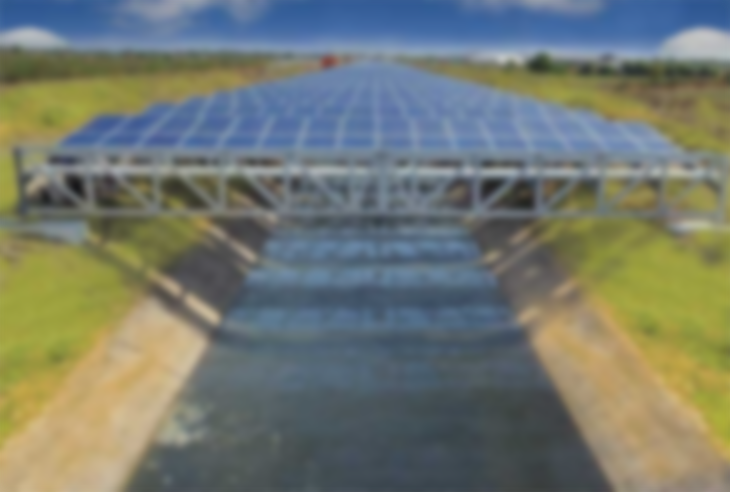
Astronomer Neil DeGrasse Tyson, who declassified Pluto as a planet, shared in former interview how the world already has flying cars. In fact he said, “We have flying cars today. They’re called helicopters, and they’re really noisy. If you want something as heavy as a car to levitate, it’s going to be making some noise.”
But the importance of the flying car theory is also because there are tunnels and overpasses which allow cars to ‘access the third dimension.’ And for India, they are using this theory and invented what’s known as ‘flying solar panels,’ which are basically solar panels that are built suspended above irrigation canals to lessen the evaporation of what they consider ‘precious water droplets by providing shade from the sun’s evaporating heat.’ In addition, it also diminishes habitat loss since they put the solar panels in areas assigned for man-made projects.
Because of the successful canal installations done in India, California is hoping to replicate them for the many obvious benefits. Considering that California is home to the world’s biggest irrigation canal network, plus basically 290 days of eternal sunshine throughout the year, the state is perfect to help itself deal with their constant water shortages by using these canal-covering solar farms as a solution to their water issues.
University of California in Santa Cruz has thoroughly looked into this method and figures that, aside from the fact that it generates green energy, it could possibly save 63.5 billion gallons of water annually from evaporation alone. This is huge for a state that has to ration water on a regular basis because of the constant droughts that the Golden State suffers from.
The original pilot project that began in Gujarat, India back in 2014, covered a space of 750 meters, which eventually led to a whole other canal-topped solar plant in the Vadodara District. Then another one was set up right off the Narmada River, which totaled 100 megawatts.
What researchers figured out as well was that the water that ran underneath the panels even cooled the water as well, which not only prevented overheating, but garnered an average rate between 2% to 5% of increase in efficiency.
For Brandi McKuin and her colleagues at UCSC, they wanted to show the pros and cons of what could happen after covering the 4,000 miles of canals in California with solar panels. They also included three separate techniques to figure out the actual water savings, as well as which construction methods would be the most efficient to scale as the method known to be the most conducive is believed to be steel cables. Their findings were published in the Nature Sustainabilitywith some very positive reviews.
The team thinks that covering the state’s canals with solar panels could also have great cost savings that include ‘water conservation, real estate costs, aquatic weed maintenance, and enhanced electricity production,’ which meant that it was worth the higher cost of building the whole solar panel project.
Moreover, California uses water pumps powered with diesel gas to drive the flow of water through the canals, and these could soon be replaced by solar as powerful as the same energy produced by 15 to 20 generators.
Co-author of the paper, Roger Bales, explained, “This study is a very important step toward encouraging investments to produce renewable energy while also saving water.”
In order to understand how it all works, here’s a video from Punjab, India which shows the REC solar panels suspended by cables above the canals, and how they save 73 million liters of water that’s then channeled to local farms, all the while generating at least 8.4 million kilowatts of energy every year since 2017.
What are your thoughts? Please comment below and share this news!
True Activist / Report a typo


